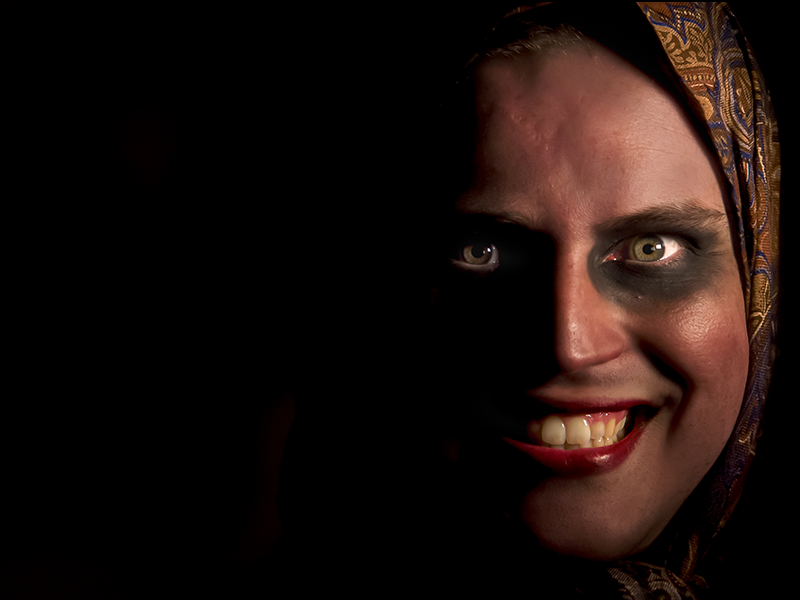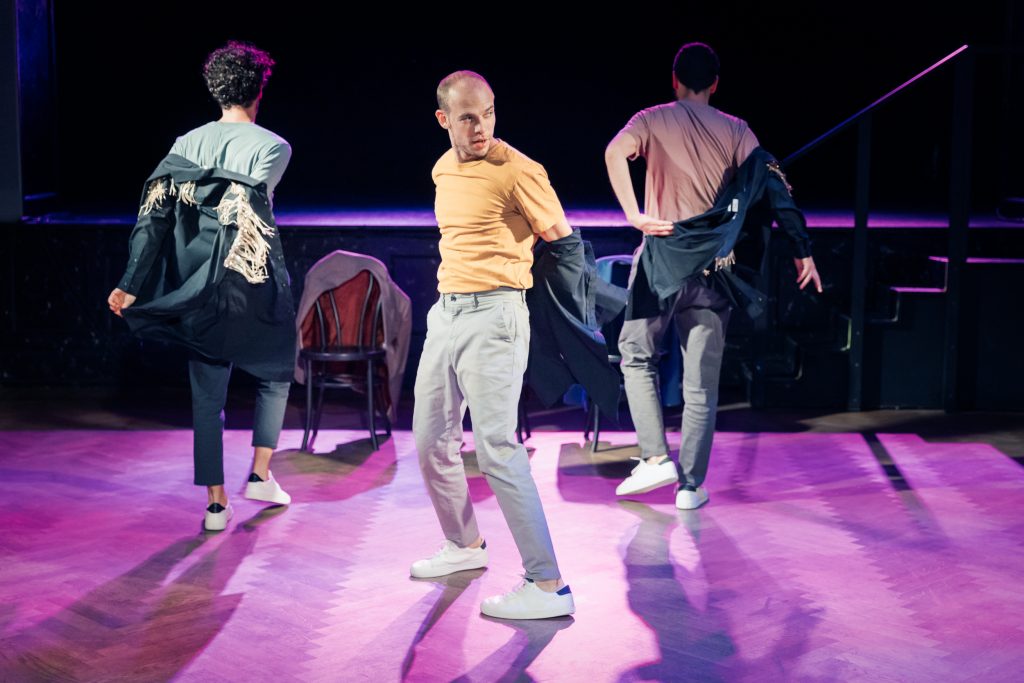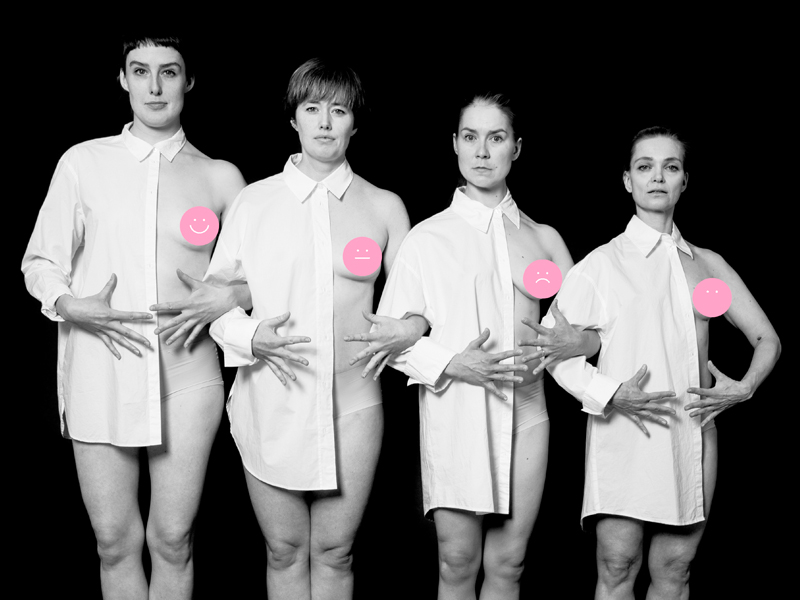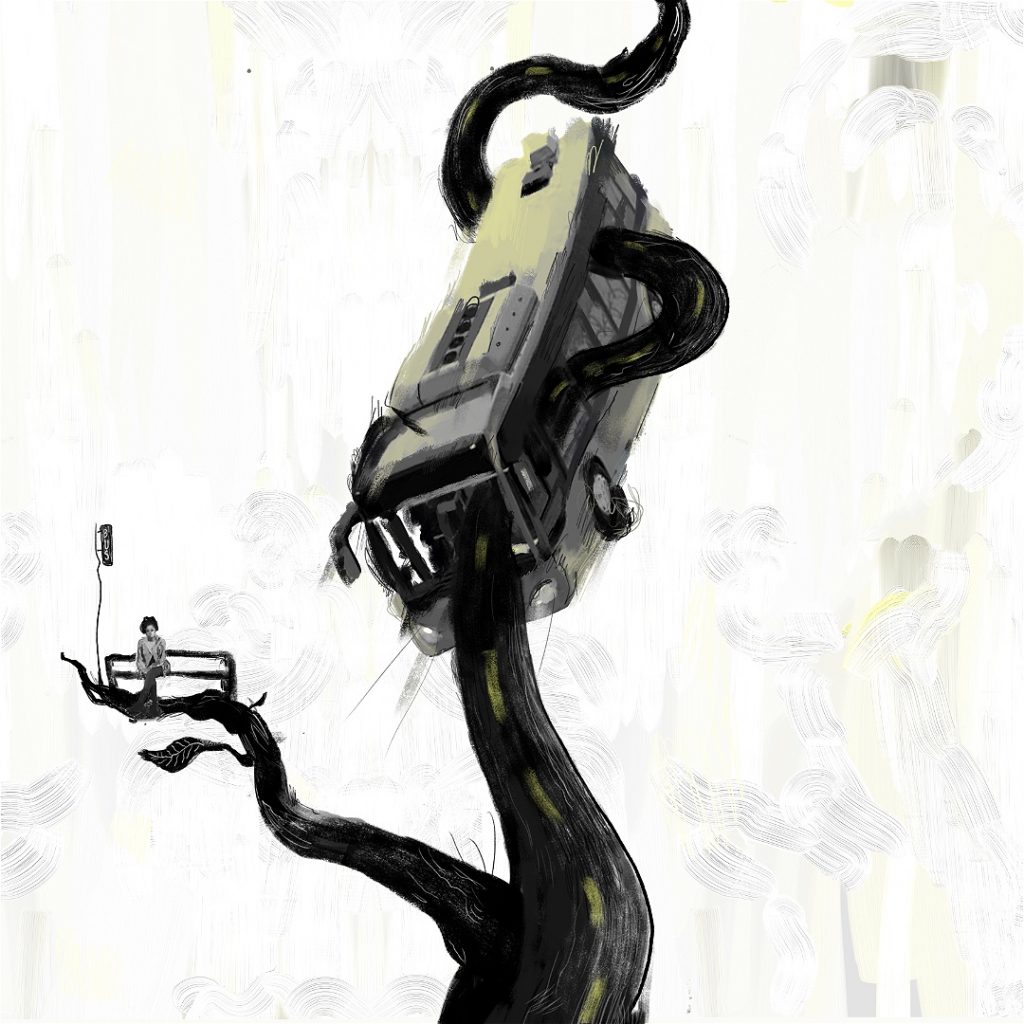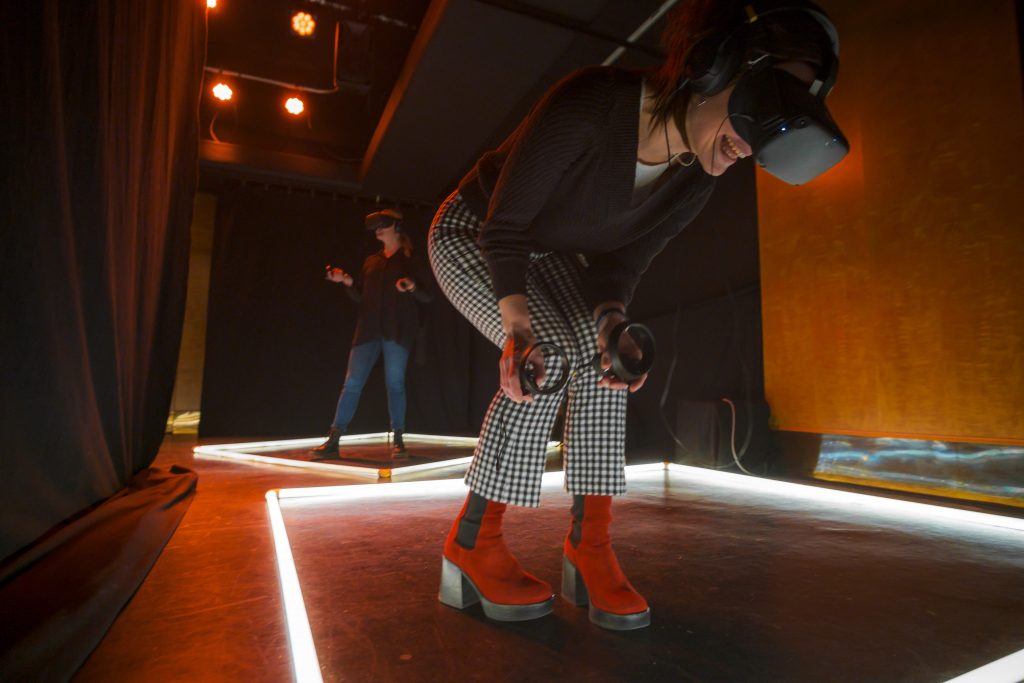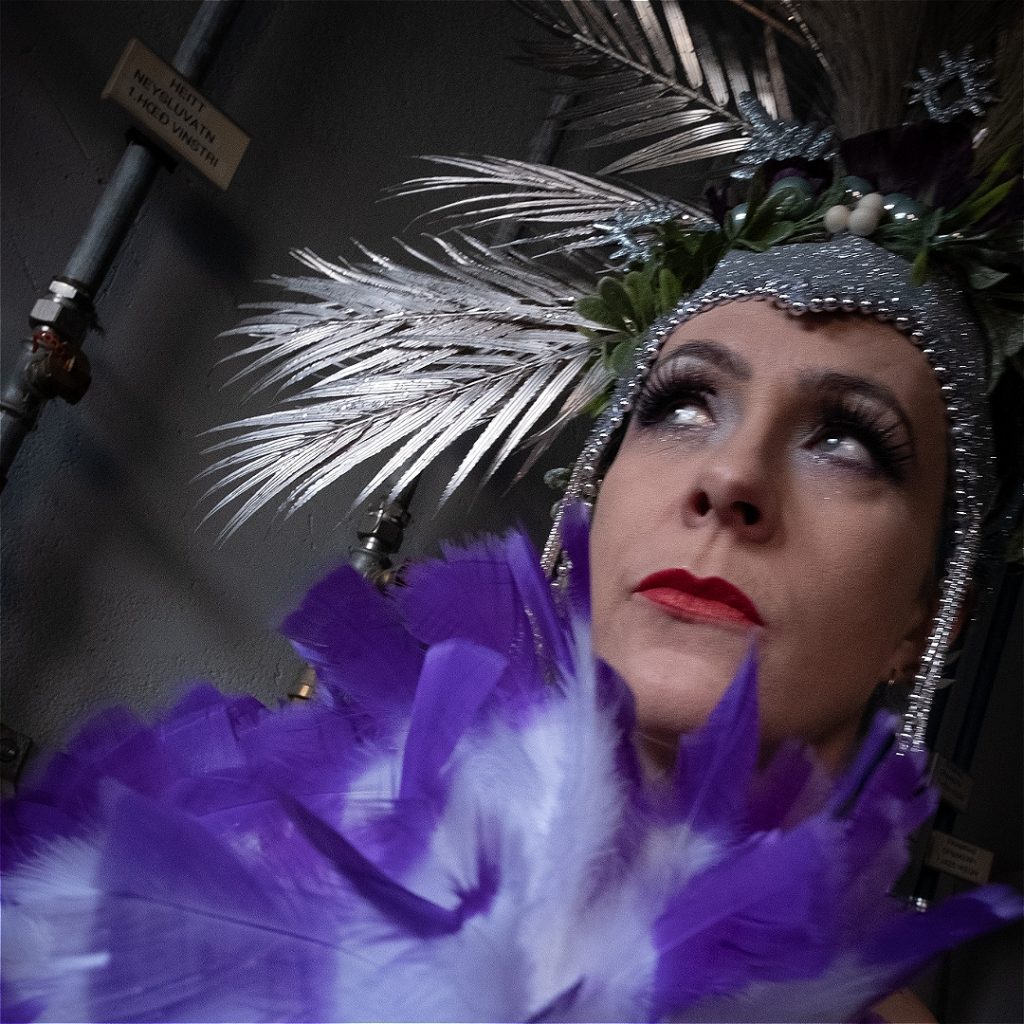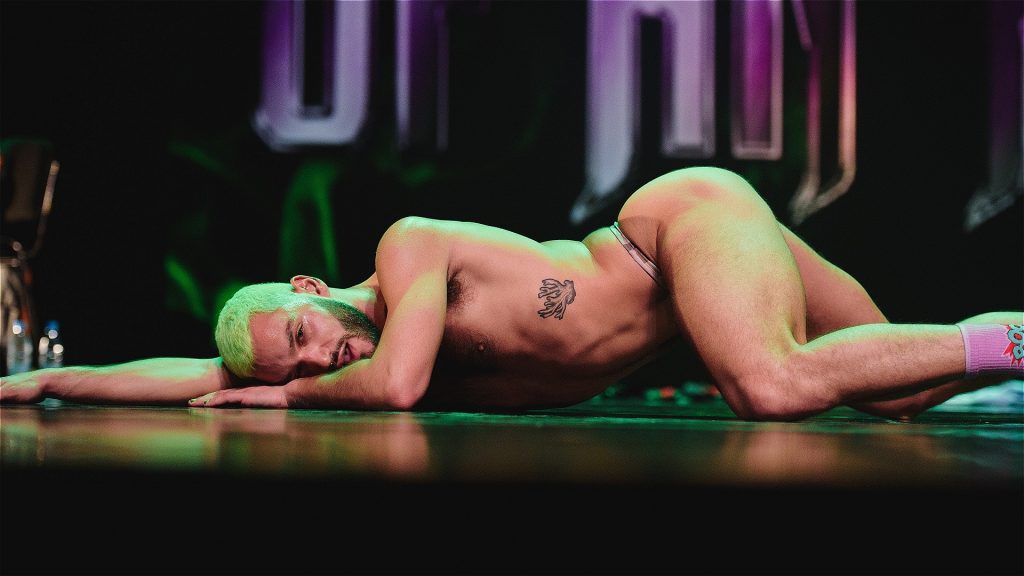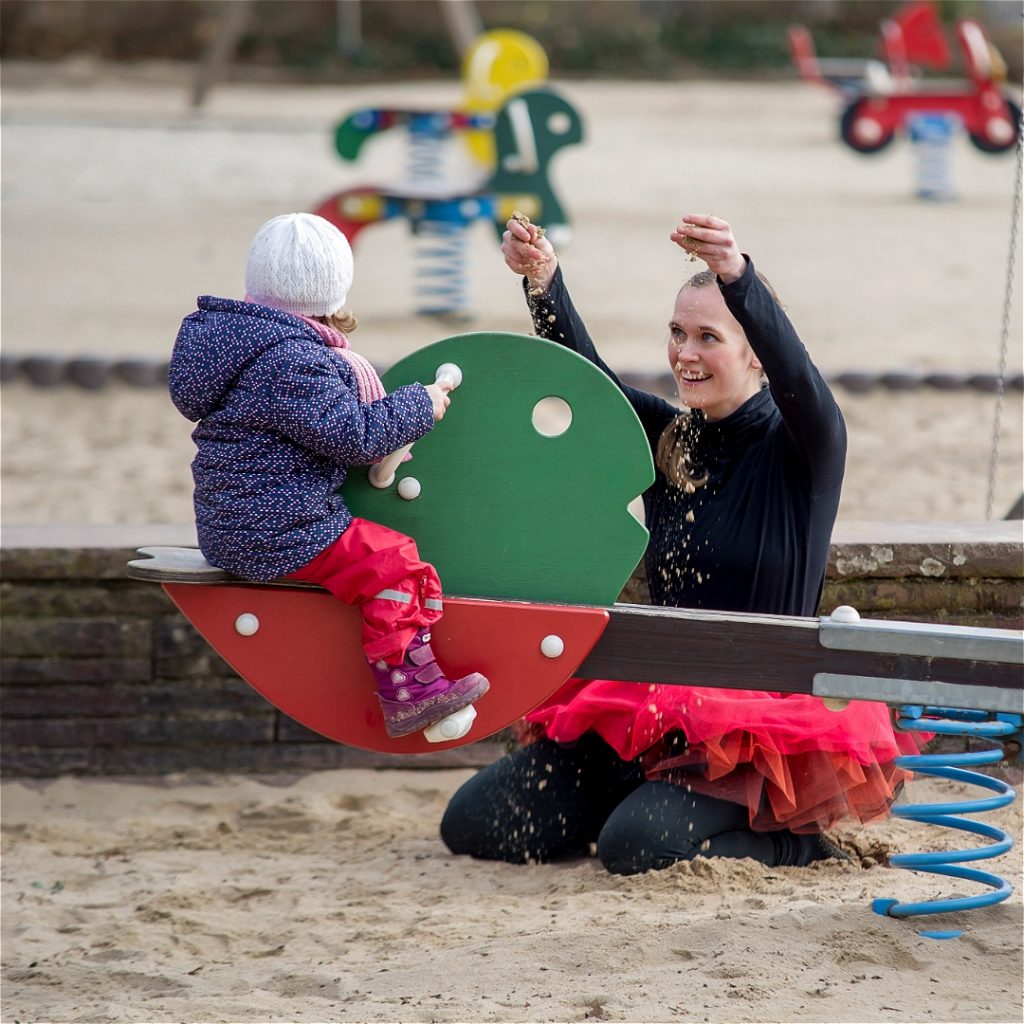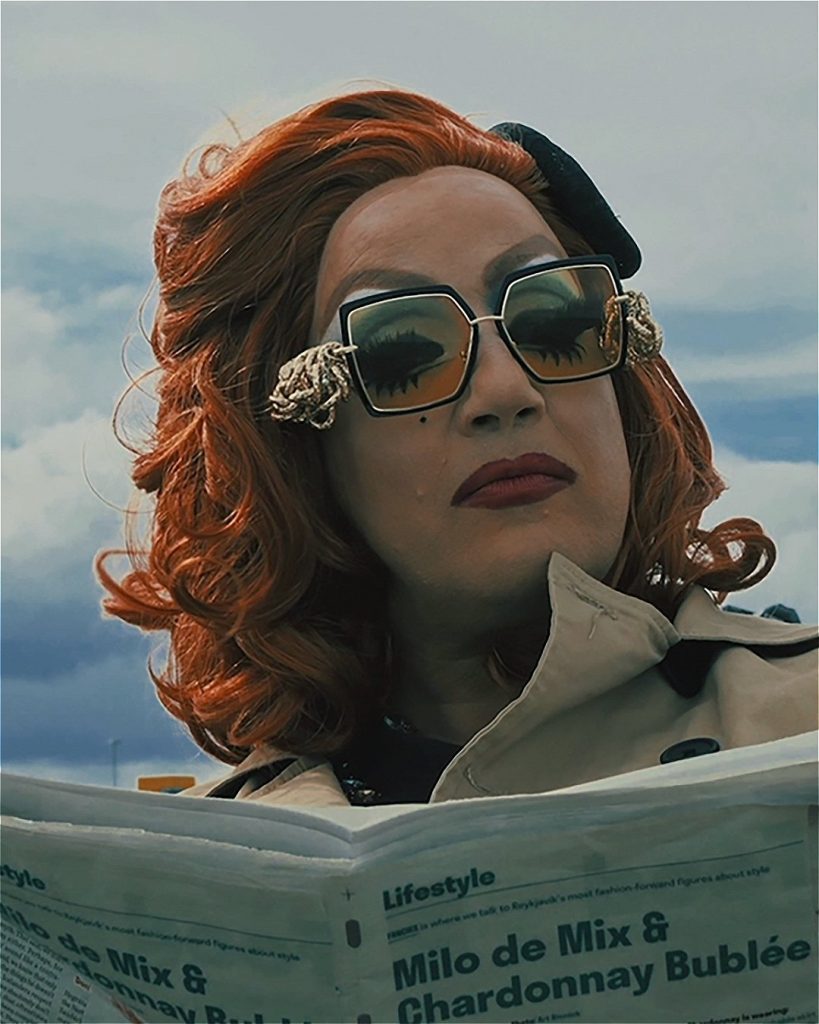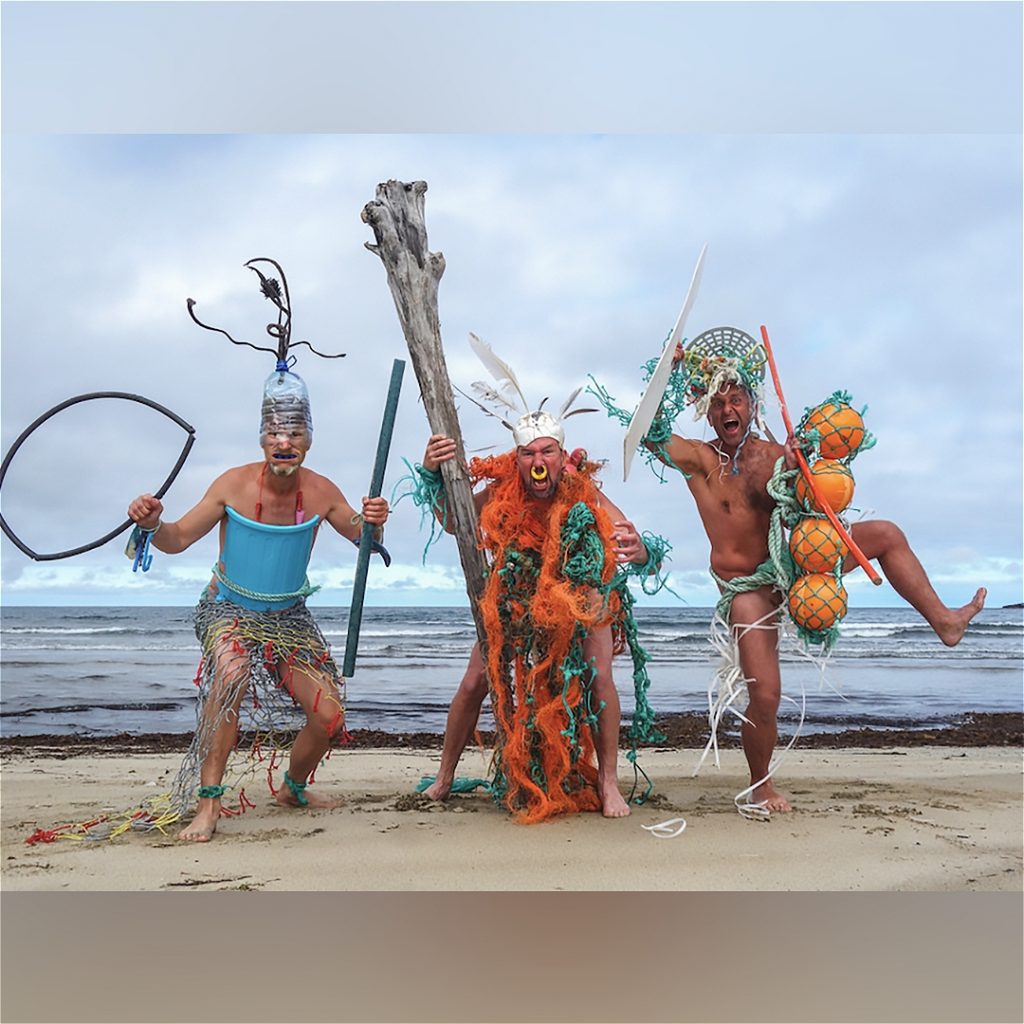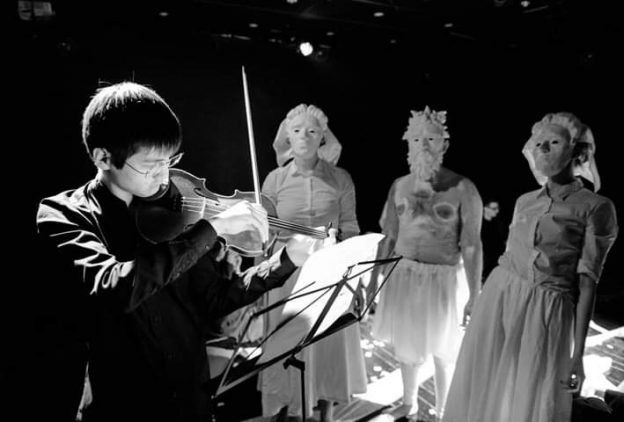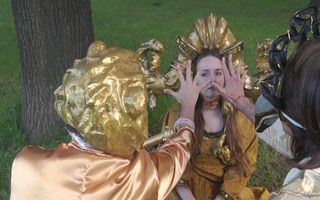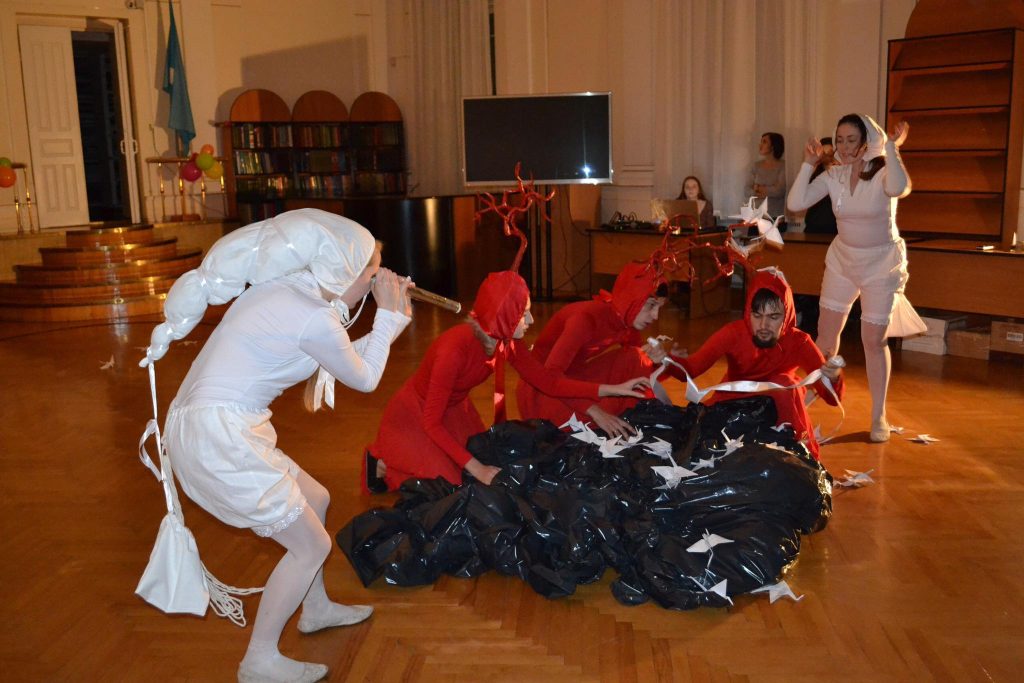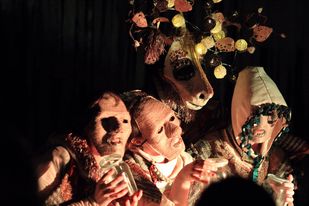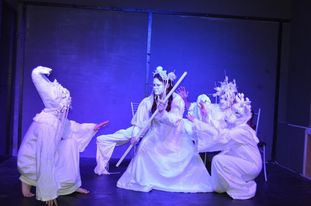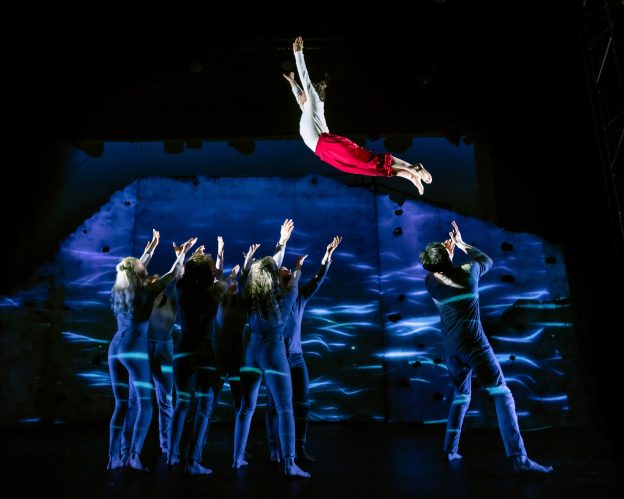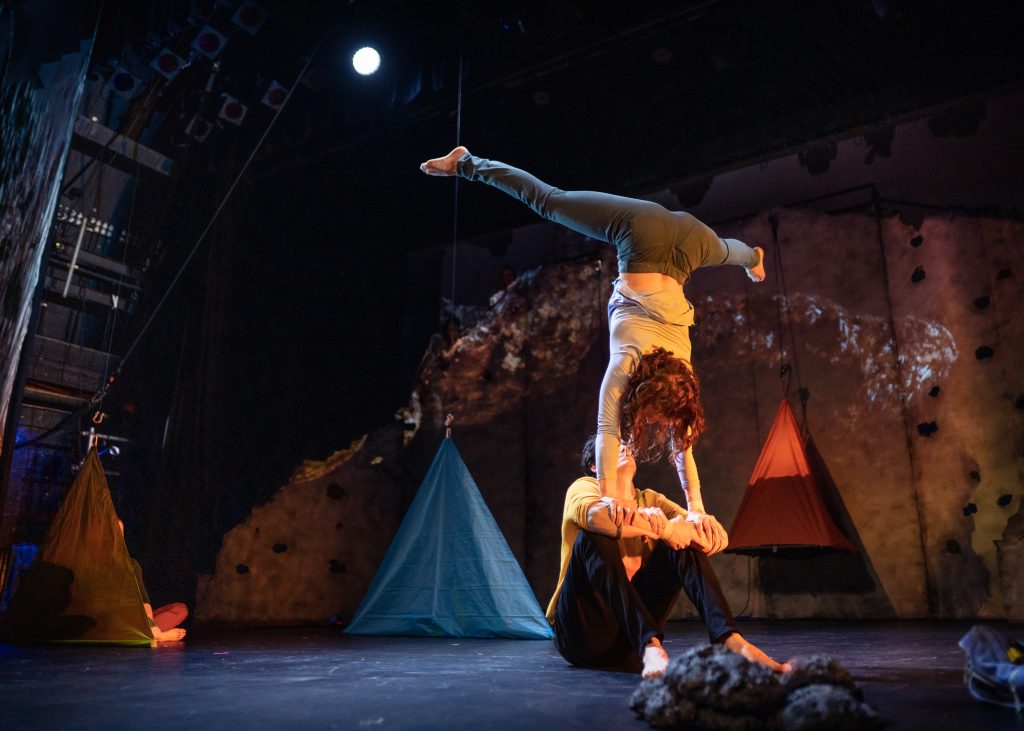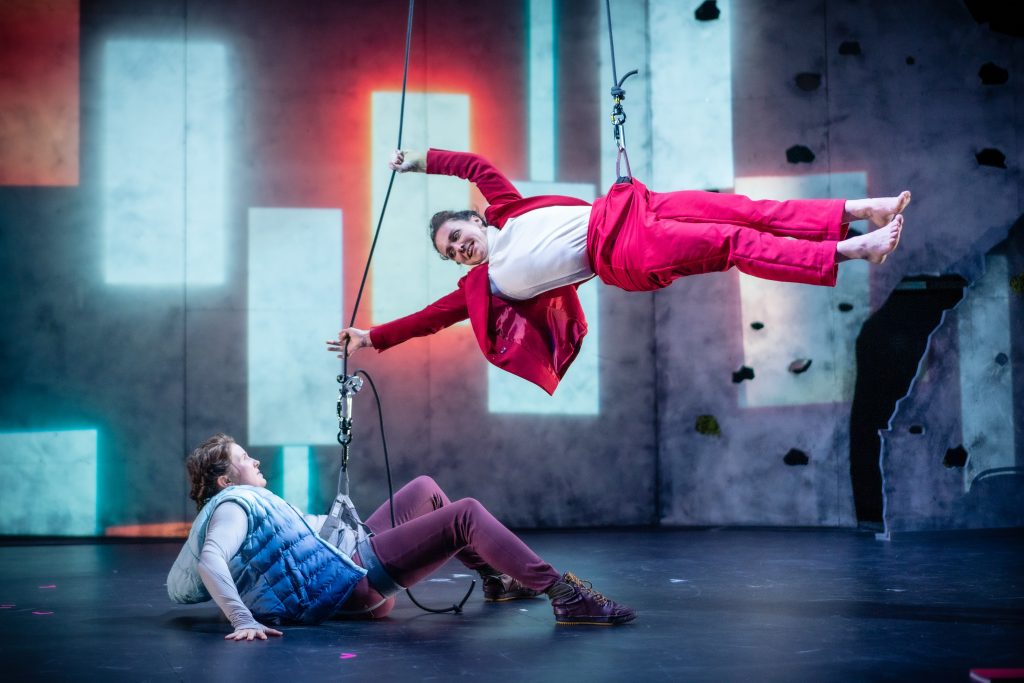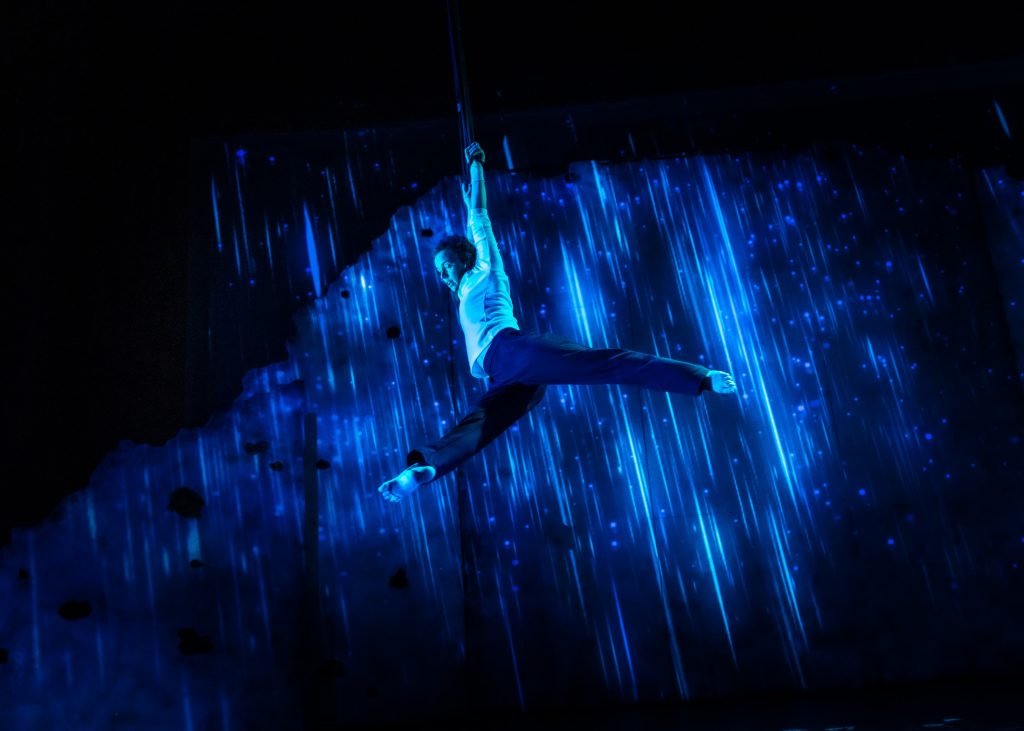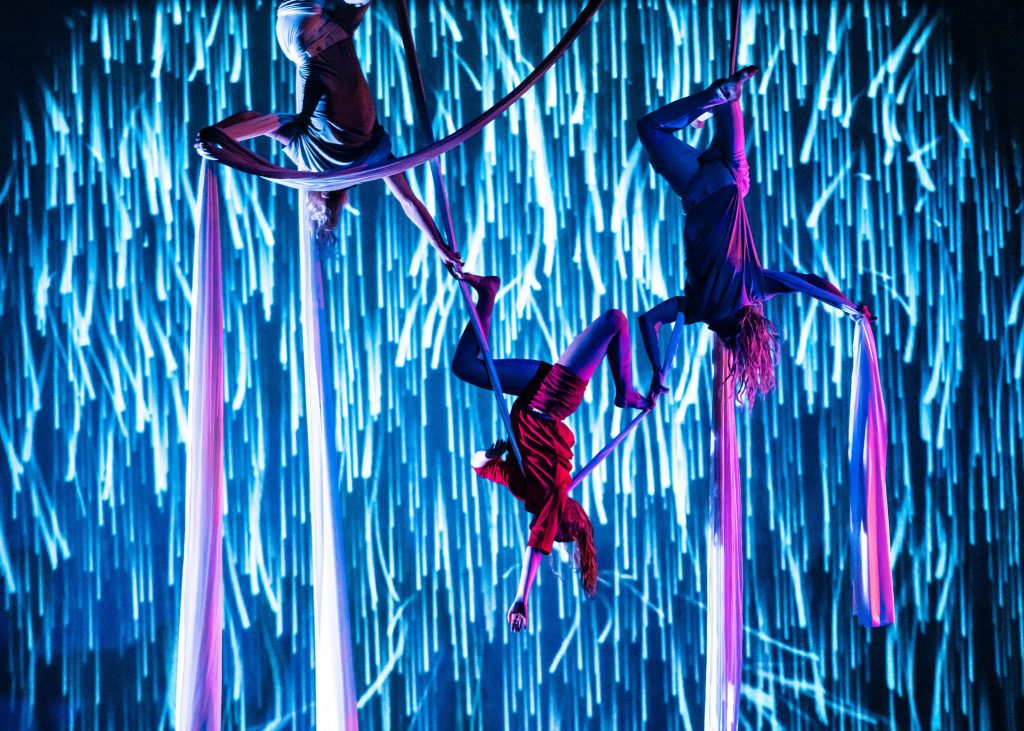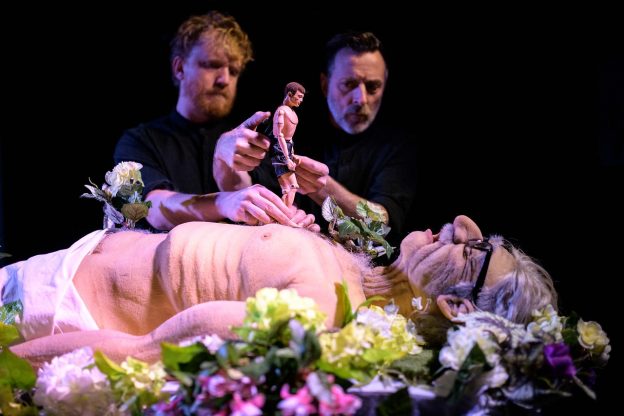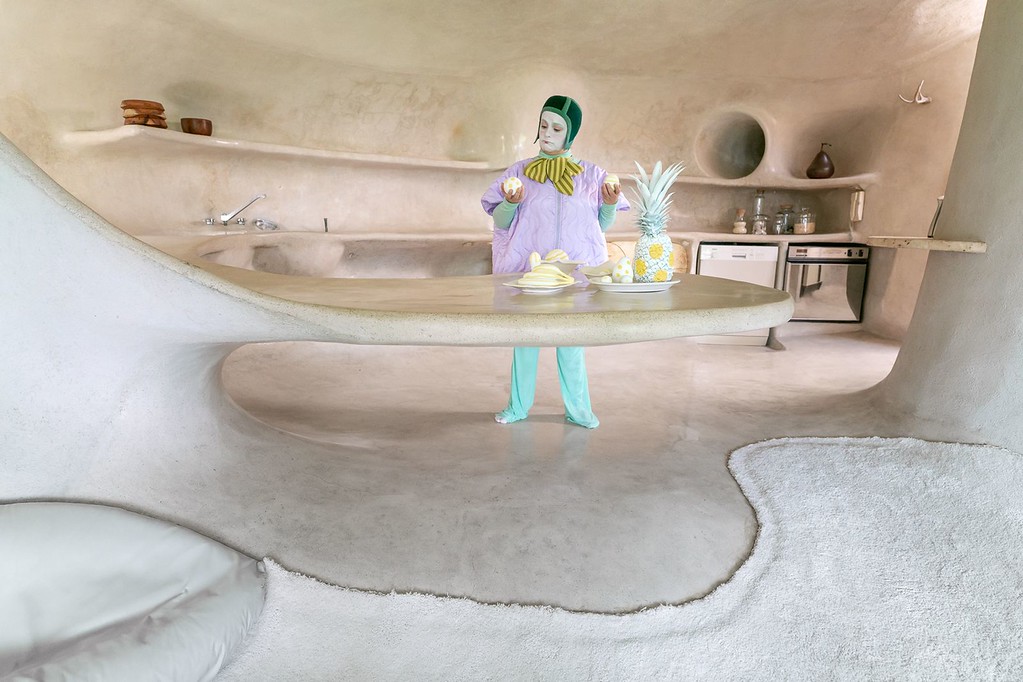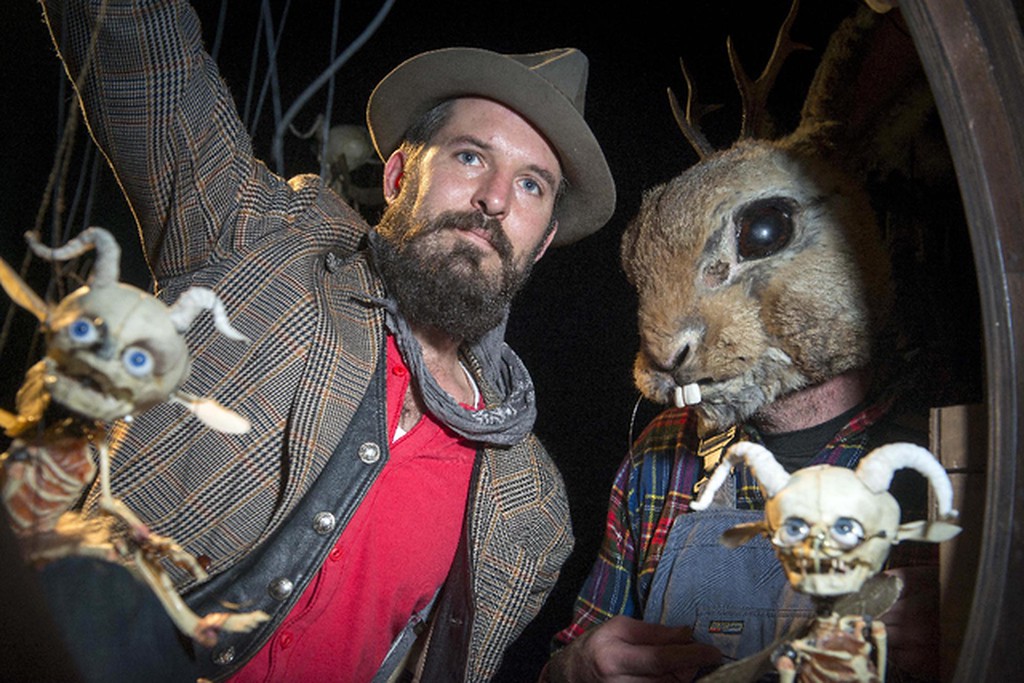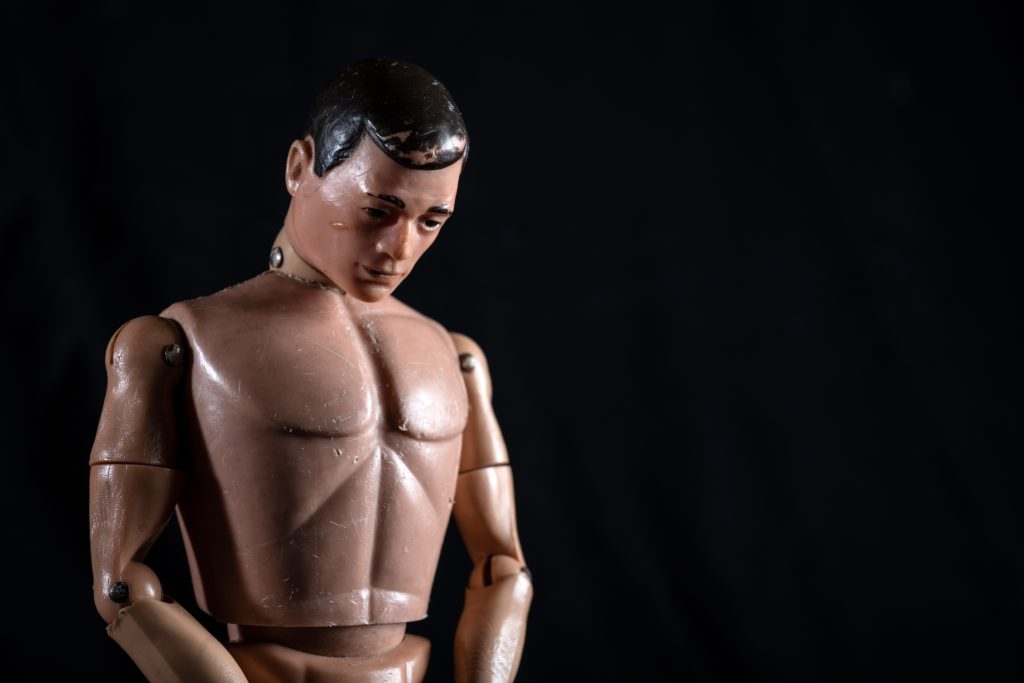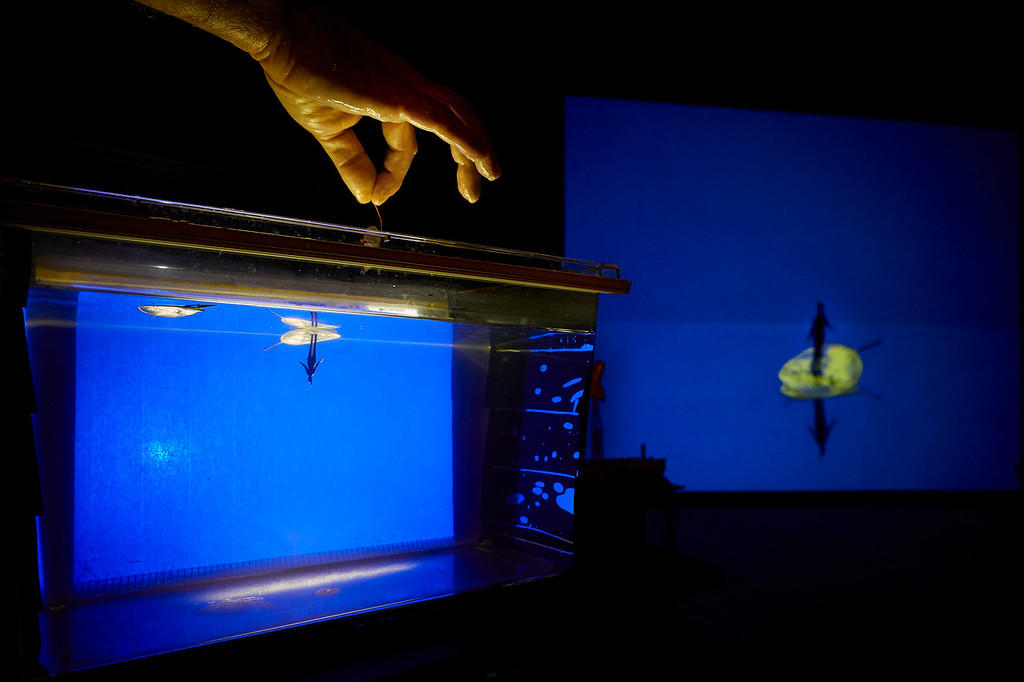Sex-bomb robots challenge notions of femininity, a trio of peacock men vie for the audience’s adoration, and an ensemble of women performers explore what it is to be male… Dorothy Max Prior samples some of the dance and physical theatre programme at the Reykjavík Fringe 2022
The opening night of the Reykjavík Fringe 2022.
There’s an air of expectation in the space – a lovely old theatre in downtown Reykjavík (Iðnó Culture House) with a conventional end-on raised stage /proscenium arch, and a wooden panelled auditorium. I mention the setting as its old-fashioned splendour contrasts so nicely with the stage picture – a futuristic scenario of coral-pink plastic furniture and purple lighting, embellished with a large rear screen and synths, and peopled with figures in flesh-coloured head-to-toe bodysuits, masks, foot-long acrylic nails, and thigh-high wet-look boots.
Welcome to the planet Hold! (We can note here that the Icelandic word ‘hold’ translates as ‘flesh’.) We are in some unspecified time in the future, in a place where humans have sought refuge after destroying their home planet, Earth. The humanoid creatures are robots called Syzers. The Syzers simulate what love relationships might be like once having simulacrum robots in the home is part of normal daily life. The central characters in Hold: The Musical are a human male and a female robot ‘wife’. There is also a chorus of robots providing the live music (members of the band Holdgervlar).
The music works well – a kind of retro-futuristic blend that channels electronic pop by the likes of Gary Numan/Tubeway army in numbers with ironic titles like ‘Pure Love’ which are sung in a kind of Gina X Euro-disco drawl. There’s also some cool disco dancing, particularly from the male lead, a ‘future man’ who is fetchingly clad in Mad Max buckled bondage wear.
The script gets a little lost in translation or delivery sometimes, but there are some fantastic moments. I love the female robot’s realisation that she will need to add in some flaws to her programming – deciding on biting her nails and adding filler words to her conversation to enhance her human femaleness /make her responses more traditionally ‘female’. She learns to laugh adoringly when ‘Master’ is talking; and muses after he leaves the room that ‘Master wants support not solutions’ after she has been admonished for trying to solve his work problems for him. Eventually, things blow up as the Syzer oversteps her boundaries. The ‘re-set, re-calibrate’ ending brings the piece cleverly full circle, as we realise that this particular Syzer has had many different incarnations…
Of course, we are on familiar territory here with a speculative fiction exploration of what it is to be ‘woman’ and ‘wife’, the notion of the less-cerebral/more emotional ‘female brain’, and the age-old question of AI sentience. There are nods (conscious or unconscious) towards Do Androids Dream of Electric Sheep?/Blade Runner, The Stepford Wives, The Handmaids Tale, and Ian McEwan’s Machines Like Me. Oh, and let’s not forget Barbarella for its cartoon sci-fi aesthetic… But there’s always room for more, and Hold: The Musical’s USP is that it is a darn good pop musical. There’s work to be done on the script and the delivery of the text, and the choreography in the chorus numbers needs more rigour. The use of moving image also feels a little token rather than integral to the piece – but it’s early days for this work, and there’s already a lot to admire here.
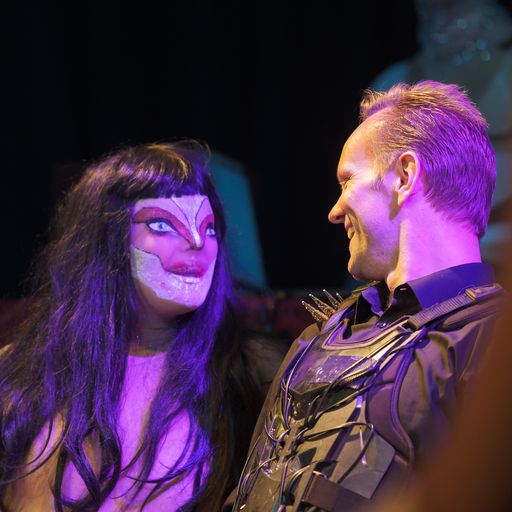
It turns out that the upfront theme in Hold – the nature of ‘masculinity’ and ‘femininity’ and the relationship between the sexes – is something of a festival theme (unsurprisingly as the stated theme this year is Love) and explored in various ways in other shows I see at the Reykjavík Fringe 2022.
Triptych Men, also presented at Iðnó, is a dance-theatre-comedy show from Tel Aviv’s Sabotal Theater, in which a trio of male performers are in competition with each other for a fabulous hour of physical and verbal storytelling, breakdancing, boogie-ing and all-round vying for the audience’s attention and approval. It is choreographed and directed by the company’s founder Gal Sabo, and is a companion piece to her earlier show, Triptych Women.
The audience is seated on three sides, and on the fourth side are three empty chairs. Enter our three smiling and strutting heroes, who move from the stage down steps to the floor, claiming the space as they do, each making eye-contact and smiling flirtatiously with audience members as he passes by; then soon after taking a chair and seating himself facing one side of the audience. All three start in on a breathless whirl of stories – childhood reminiscences about getting lost on the way home from a friend’s house; worries about body size and dealing with ill-fitting clothes; or being in constant, alarming conflict with a bullying brother who keeps a baseball bat just for the purposes of attacking his sibling. At a given signal, each man moves on to the next audience group, all done with a neat choreographic precision. Of course, most of our focus is on the man right in front of us, but we can’t help being pulled into the other stories, which are not quite out of earshot. Then, the chairs are moved back to the starting position, and the three men sit in a line and work in chorus, their words beautifully marked and emphasised by precise physical gesture. We move on from childhood to adolescence, and the multiplicity of stories get whittled down to one narrative: the story of Sheila – the unattainable high-school crush, first desired in class, with the heartache and painful awkwardness building at the school disco, and coming to a head at a beach outing that ends disastrously…
The beauty of Triptych Men is in the excellence of the choreography and in the superb performance skills, with both the small movements and the big showcase dances given equal care and attention. Every walk, every move of a chair, every glance or gesture, every change of clothing is taken seriously, enacted with authority. Nothing is left to chance – every transition from scene to scene is smoothly executed. In the more obviously physical sections (although it is all physical acting, from start to finish), each man gets to showcase his talents as breakdancer or strutting and lip-syching disco-divo. The ensemble work is spot-on, utilising skills from physical theatre, contemporary dance, street dance, acrobalance, and contact improvisation. Verbal delivery (in a second language, to boot!) is powerful and precise. Although there is an upbeat and comedic tone to much of the show, the subject matter (male identity and coming-of-age experience, and all that this encompasses) brings forth many poignant moments. The story of the adult encounter that ties up the Sheila saga is full of pathos, and I particularly love a scene in which a length of stretchy material (think aerial silks or similar) is pulled out and toyed with and eventually wrapped around two of the men, turning them into a father with a baby in a sling. Oh, and there’s not only a brilliant Travolta parody, but also a great and authentically choreographed Charleston – which if I hadn’t already been won over, would have been the clincher.
Unsurprisingly, this show is one of the great successes of the Reykjavík Fringe 2022, winning two different awards (one for Outstanding Performance, plus the Artists Favourite award).
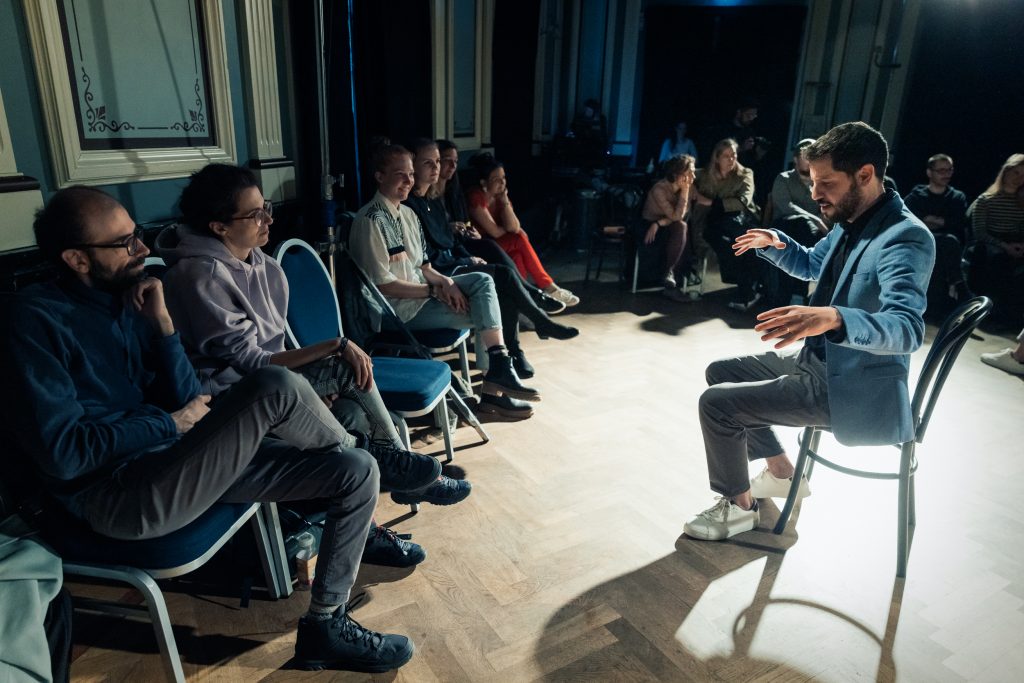
Another award-winner (for Best Ensemble) is Spindrift’s Them, which also explores masculinity, and is similarly driven by a female eye, although in this case it is the performers/co-devisers and not just the director who are female, offering their perspectives on masculinity. Another crossover with Triptych Men is the incorporation of true-life stories reflecting on masculine experience – although in this case, verbatim quotes taken from interview rather than the (presumed) autobiographical material of Triptych Men.
We start with a fabulous stage picture – a sculptural array of men’s suits and lamps suspended in the space, plus a table and chairs, through which the four-woman ensemble move with fluid ease: here, a chorus of female voices saying ‘sorry’ repeatedly; there, a row of four ‘men’ with their trousers pulled down to their knees. There is much playful send-up of male behaviour in scenes of apeish and boorish boozing and boasting – all enacted tongue-in-cheek with great physical presence and strong mimicry skills – although I do find myself wondering if they, as women, have the agency to do this. Would we accept men mimicking female behaviour in a derogatory way onstage? If not, should we apply the same ‘rules’ in reverse? I don’t know. It’s a question, not a judgement…
An early scene gives us a parodic take on a 1950s manual for new wives (prepare his dinner, fix your hair and make-up, clean up the toys, clean up the kids). This is cleverly enacted and funny, but feels a little jaded and over-familiar. I understand that it is a set-up for what is to come, and perhaps is trying to make a point that things haven’t changed as much as we might like. But the 1950s is now 70 years ago, and to me this scene doesn’t feel that relevant to the exploration of contemporary tropes and mores of masculinity at the heart of he piece.
But as the show progresses, focusing in on the verbatim texts generated from the interview research across many Nordic countries, the material becomes very much stronger – and by the halfway point I’m completely won over. We hear stories of men who are unable to cry at the death of a son, hiding away alone in a parked car to shed silent tears; men who find it impossible to show love to their daughters in any way other than offering to fix their cars or do their DIY; and men whose only currency in matters of love is money. In all of these snippets and small moments, the integration of the spoken text and the carefully-choreographed movement work is spot-on. Two long stories are played out beautifully, with a wonderful demonstration of classic physical theatre hero/chorus techniques: one is a horrific story of a nightclub beating, the other a heartbreakingly funny tale of an adolescent at summer camp who feels he needs to prove himself by embarking on a nigh-impossible early-morning run. The moment where, exhausted and with feet blistered and torn to pieces, he refuses a lift back to base from his camp counsellor, who has come out to look for him, is such a classic moment of young male pride holding out, brought to us with love not judgement.
The piece ends where it started, with the chorus of female voices apologising and downplaying their own importance – thus bookending the piece nicely, and framing the work as a female-eye-view on masculinity. It is a pleasure to see a young company with such consummate ‘total theatre’ skills, playing here after six years of development, in the Reykjavík theatre (Tjarnarbíó) that the piece was always envisioned as the ideal stage, to a full house that gives them a standing ovation.
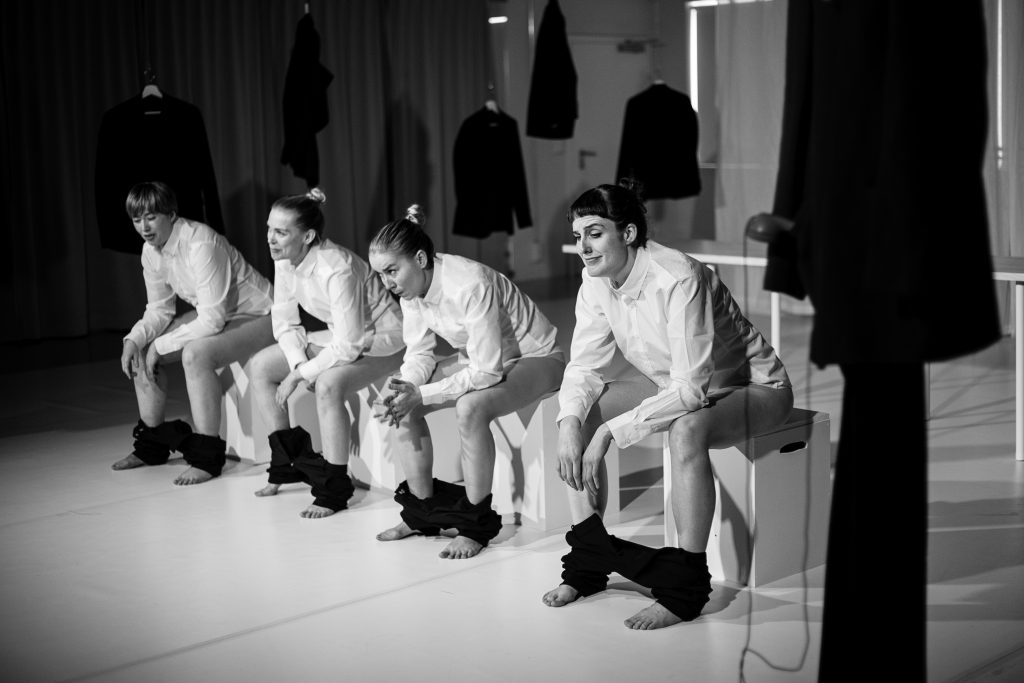
Also seen at Tjarnarbíó is Y Todavia Somos, by Spanish dancer and choreographer Julia Nicolau. And yes – it’s another award-winner! It’s a lovely piece, executed with great movement skills, but it is rather hard to get a grip on what it actually is. Essentially, an autobiographical solo dance work with spoken text – but one that also incorporates a sound-looping musical section using flute, voice, palmas (clapping) and castanets; a conversation with herself on video, interrogating her practice; pre-recorded verbatim texts, mostly with older relatives and members of the community; and a rather long section of monologue musing on her own life trajectory and intentions, fears and hopes.
The publicity material describes the piece as ‘an exploratory process on how to go beyond the formal limits of the body through articulatory movement’ – and yes, skilful articulation of the body is a key element – Julia’s double-jointed movement work often goes beyond dance to acrobatic contortion skills. And there is more than one marvellous scene where her long hair, tossed over her face, becomes a kind of mask, turning her beyond-human into a marionette with sophisticated articulation. But it seems to me that the heart of the piece is less an exploration of the capabilities of a young and able body than an investigation into what it is to live in an ageing body: we are all dying, daily. The subject of mortality comes up again and again throughout the show. A lovely spoken word section reflects on the death of a grandmother, who passes away on a park bench. She, a woman who always avoided being the centre of attention, would (had she not been literally mortified) have been mortified to know that she had caused such a fuss in a public space!
There is also a recurring motif of reflecting on the immediacy of the present moment. There is no fourth wall: we are addressed directly, and Julia constantly reminds us that we are here together in the here-and-now. When the looping section doesn’t work as well as she might want it to, it’s scrapped and begun again. At another point, as she winds the large rear-stage screen down, she remarks that she likes the noise it makes. Call-and-response is another key motif: in the looping section, of course, but also in sections where as dancer she responds to pre-recorded words, hers or other people’s; or responds to her own live words with gestures; or to her own image on screen. Ultimately, it’s a piece about being alone, even when not alone – we are born alone, and we die alone.
These four shows, seen in the opening weekend, formed part of a strong strand of dance and physical theatre presented at Reykjavík Fringe 2022.
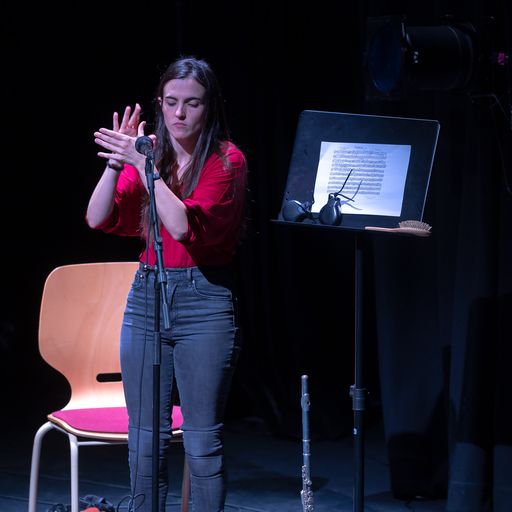
Featured image (top of page): Spindrift: Them
For more about the festival, see the Reykjavík Fringe Festival website. For a reflection on this year’s programme and interview with artistic director Nanna Gunnars, see companion piece We Are Family.
Holdgervlar: Hold: The Musical was seen at Iðnó Culture House Reykjavík on 24 June 2022.
Sabotal Theater: Tripytych Men was seen at Iðnó Culture House Reykjavík on 26 June 2022.
Spindrift: Them was seen in a festival preview at Tjarnarbíó Reykjavík on 22 June 2022.
Julia Nicolau: Y Todavia Somos was seen at Tjarnarbíó Reykjavík on 25 June 2022.
Reykjavík Fringe Festival took place 24 June to 4 July 2022.
Reykjavik Fringe is the home of the Icelandic grassroots art scene as well as a platform for more established performers to experiment and play. Festival artists are a mix of local and international performers. The festival takes place at the height of summer, making the most of the long days and the midnight sun. Venues are all in central Reykjavík, a close walking distance from one another. Tickets are affordable and the atmosphere is always welcoming.
Dorothy Max Prior travelled to Reykjavik with support from Inspired by Iceland, brokered by Reykjavik Fringe Festival. She stayed at Local 101, central Reykjavic.



